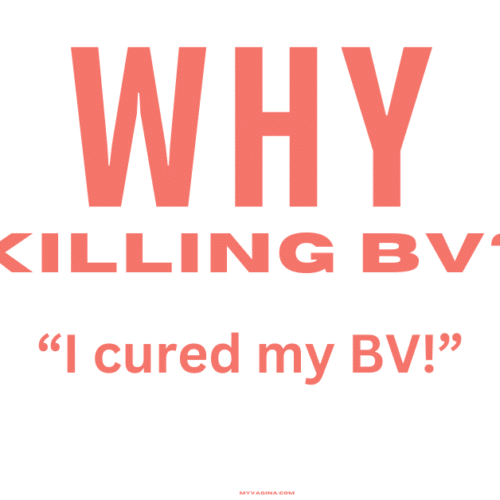Interstitial cystitis
Interstitial cystitis (IC), also known as painful bladder syndrome, is a cause of bladder pain and frequent urination, with the cause unknown.
Men don’t typically get IC, with nine out of 10 sufferers being women, of any age but usually around or the decade prior to age 40. Interstitial cystitis is chronic, meaning it (sadly) just goes on and on for no known reason, with variable responses to treatments.
Sometimes interstitial cystitis goes into remission for long periods of time, then reappears, or it may disappear completely for good.
Women with fair skin and red hair have increased incidence of interstitial cystitis, as do those with chronic pain disorders like irritable bowel or fibromyalgia.
Symptoms of interstitial cystitis
- Pain when the bladder is full
- Very frequent urination (40 or 50 times in a 24-hour period compared to a normal seven or eight)
- Some relief after urinating (emptying the bladder)
- Pelvic pain
- Abdominal pain
- Vaginal pain
- Pain during urination
- Pain during sex (dyspareunia)
- Pain as the bladder fills
- Nighttime urinating (nocturia)
- Urinary urgency may develop – even after urinating, the urge to go again may be strong
What interstitial cystitis is not
Not usually connected with leakage or fear of leakage.
Cause of interstitial cystitis
The cause is unknown, but theories do exist that are under research currently.
- Leaky bladder lining: Interstitial cystitis could be caused by a defective bladder lining. This lining is referred to as the glycosaminoglycans (GAG) layer. A defect in this tissue could result in urine having access to more delicate tissues underneath the stronger bladder tissue that protects the rest of our body from acidic urine, causing inflammation.
- Histamines: An allergic reaction could cause the release of histamine from the mast cells in the bladder wall, causing swelling and inflammation of the bladder lining.
- Autoimmune: Your own immune system may attack the bladder. It is known that IC is more common in women with autoimmune conditions.
- Very irritating (or toxic) urine: There may be an agent in the urine that is highly irritating to the bladder wall.
- Post-surgery: Hysterectomy is a known risk factor for IC, but we aren’t sure why.
- Use of nonsteroidal anti-inflammatory drugs (NSAIDS): Surgam (tiaprofenic acid), a nonsteroidal anti-inflammatory drug, has been linked to IC. Other NSAIDS have offered links also.
- Infection: The bladder lining may be infected with something we can’t see, like a virus.
Diagnosis of interstitial cystitis
It can take some time to diagnose interstitial cystitis, with several doctor’s visits and urology tests. It’s important to see if there is an underlying infection, and rule out other causes of symptoms first, such as cancer, overactive bladder, endometriosis and infections. There is no one test for IC, and diagnosis is based on clinical symptoms.
Urine samples will be taken to test for infections, and a normal result is often found in people with IC. A cystoscopy may be performed – a telescope is inserted into the bladder via the urethra to take a look inside. The bladder lining can look completely normal, but sometimes a red patch can be seen (called a Hunner’s ulcer). If a Hunner’s ulcer is found, this is indicative of interstitial cystitis.
Another test that can be performed is called hydrodistension (done under anaesthetic), which means sterile water or saline solution can fill the bladder to distend it, which can show small blood spots (glomerulations) when the water or solution is released. This is highly indicative of interstitial cystitis.
A biopsy may be taken to rule out cancer and other diseases.
Treatment for interstitial cystitis
Each person will have a treatment plan created for their circumstances, since everyone’s IC is a bit different.
Because this is one of medicine’s mysteries, using a variety of treatments from different disciplines can be really helpful. For example, modifying the diet has been known to work really well for improving symptoms in some people.
There is a reason for your interstitial cystitis, and it’s your job to find out what it is. Medicine is very limited in its ability to help people with interstitial cystitis, so looking outside of traditional medicine may be your ticket out of IC hell either in controlling symptoms, or finding your underlying cause.
Diet for interstitial cystitis
Some foods are known interstitial cystitis irritants to some people – tomatoes, citrus, bananas, chocolate, cheese, mayonnaise, nuts, onions, raisins, sour cream, yoghurt, spicy food, coffee, wine, beer, soda.
Finding someone who can help you devise and prepare an elimination diet as a first port of call can be extremely useful.
Drugs for interstitial cystitis
- Antidepressants: Drugs given orally can include an antidepressant that acts as a pain receptor blocker (amitriptyline), while also having a sedative effect. It also helps suppress the urge to urinate.
- Antihistamines: antihistamines are understood to help relieve inflammation in the bladder.
- Elmiron (pentosan polysulfate): this drug is specifically approved for interstitial cystitis, and works to restore the GAG lining of the bladder, to help protect the underlying layers from irritating urine. It can be expensive, and it doesn’t work for many people, causing side-effects like intestinal issues and liver dysfunction.
- Gabapentin: This drug is a pain modifier and acts to modulate pain caused by interstitial cystitis.
- Bladder instillation with various drugs: this means drugs are inserted directly into the bladder via the urethra (a catheter), sometimes under anaesthetic.
- The drugs could be dimethyl sulfoxide or DMSO (Rimso-50), a chemical derived from wood pulp that is used sometimes in medicine. It can reduce inflammation and pain in around 30 per cent of all interstitial cystitis patients. It destroys free radicals, which can be a cause of damaged cells. It leaves patients smelling of garlic, for unknown reasons.
- Heparin: anticoagulant drug that is sometimes mixed with DMSO.
- Steroids: steroids may also be mixed with DMSO.
- BCG: used to stimulate the bladder’s immune cells.
- Clorpactin: a wash for the bladder, used under anaesthetic.
- Hydrodistention: as listed above as a diagnostic procedure, hydrodistension can actually relieve symptoms in about 50 per cent of all interstitial cystitis patients, with weeks or even months of relief after hydrodistention. If that worked, it can be repeated.
Surgical options for interstitial cystitis
When the condition is dire and all other treatments have failed, surgery may be considered.
- Sacral neuromodulation: electrodes are implanted into the lower back, blocking pain-transmitting nerves that go to the bladder.
- Urinary diversion (ileal conduit): This operation sends urine directly to a bag held outside the body, so it bypasses the bladder completely, alleviating symptoms. This, while nobodies idea of a good time, can be so relieving for patients, they are happy to do it. It means no rushing for the toilet endlessly and pain is completely relieved. It can cause later kidney problems, however, since the normal feedback systems of the body are interrupted in the urinary system.
- Bladder reconstruction: a portion or all of the bladder may be removed, then reconstructed from a part of the bowel, expanding bladder capacity. Pain may remain, however.
- Bladder removal (cystectomy): Sometimes when no other surgery has worked, including a urinary diversion, the bladder may be completely removed. Even then, pain may persist.
The emotional implications of interstitial cystitis
Support is essential. Living with chronic pain can be extremely difficult, since it can rob you of your enjoyment of each day. There are support groups online for people with interstitial cystitis, so find the local group in your country or area.
Stress and anxiety can really tax your body and soul – having to be near a toilet all the time can be quite limiting.
Prognosis – what does interstitial cystitis mean for my life?
Symptoms typically appear then disappear for many years. Treatment often results in remissions, but then symptoms may reappear later. A small group of people with interstitial cystitis will lose their ability to hold a lot of urine (lowered bladder volume) over time.
Scarring of the bladder can occur, causing pain and further bladder volume losses. There is a third group of patients who recover completely.





